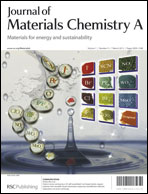Modulated formation of metal-organic frameworks by oriented growth over mesoporous silica†
Abstract
Engineering the structure of metal-organic frameworks at the molecular level is of major interest for taking MOFs beyond their uses as bulk materials and creating multifunctional features with advanced applications. The notion involves directing MOF structure and controlling


 Please wait while we load your content...
Please wait while we load your content...